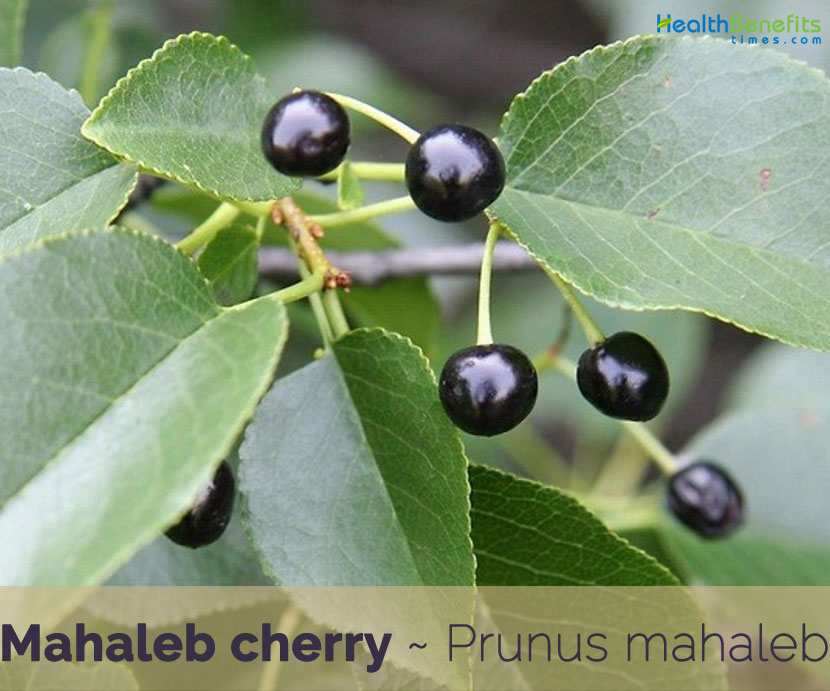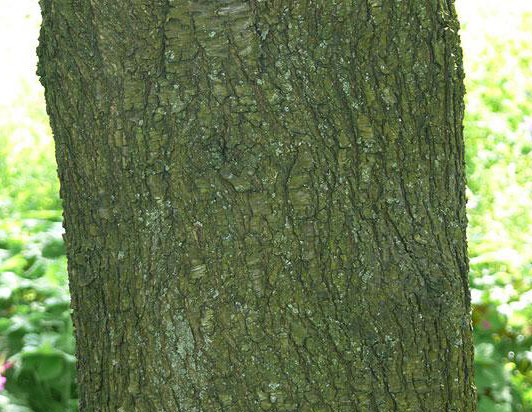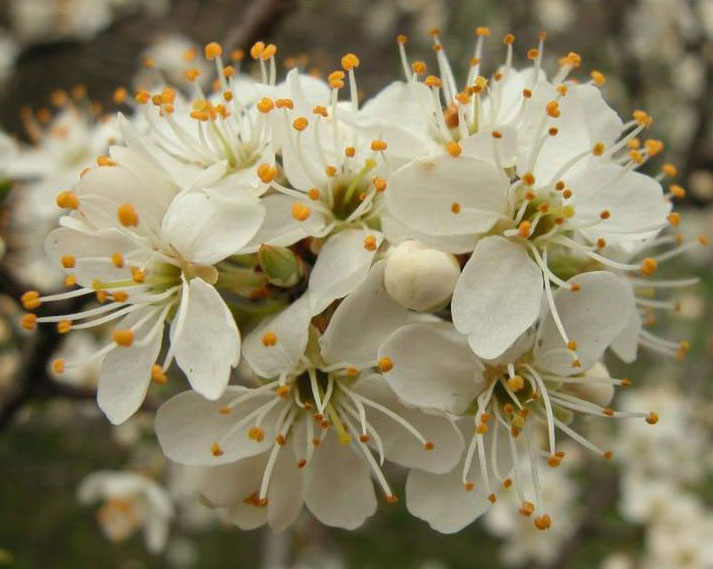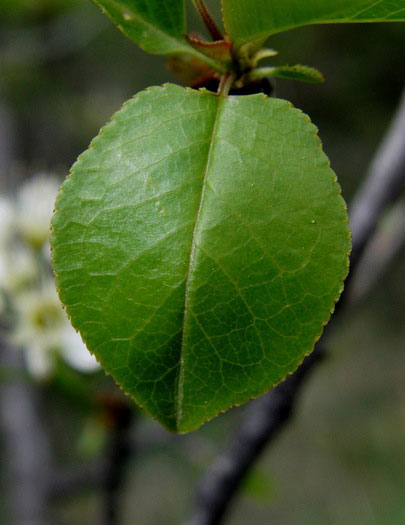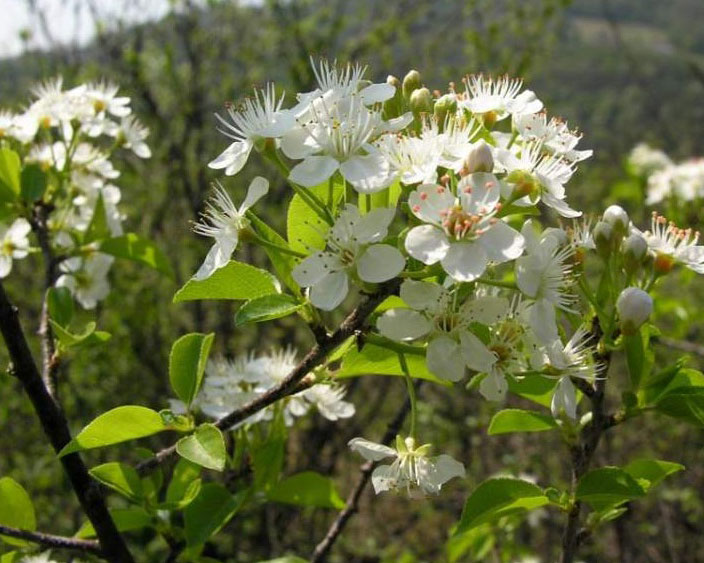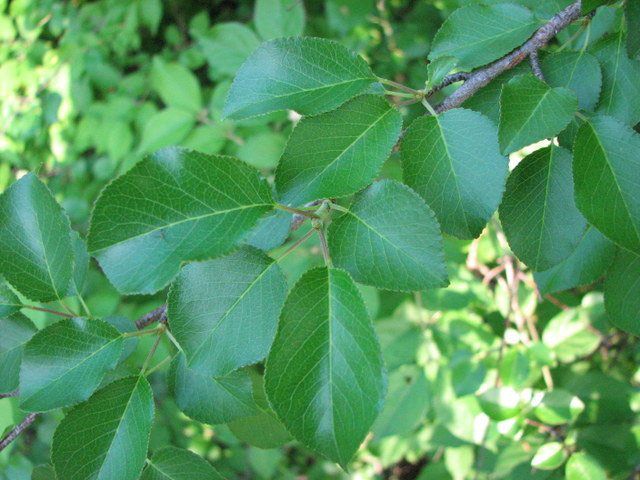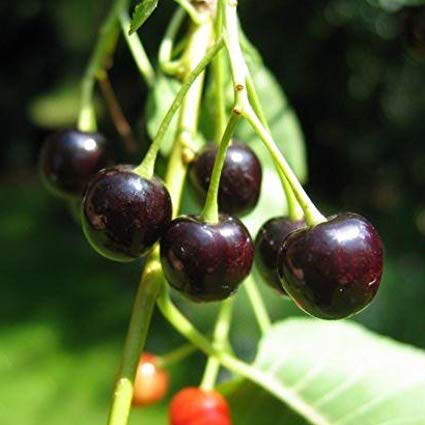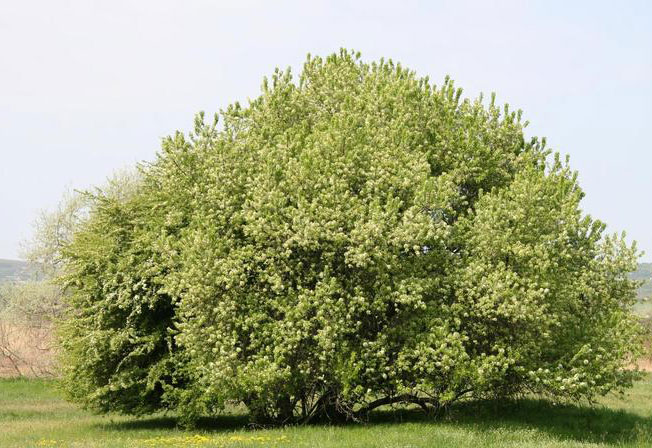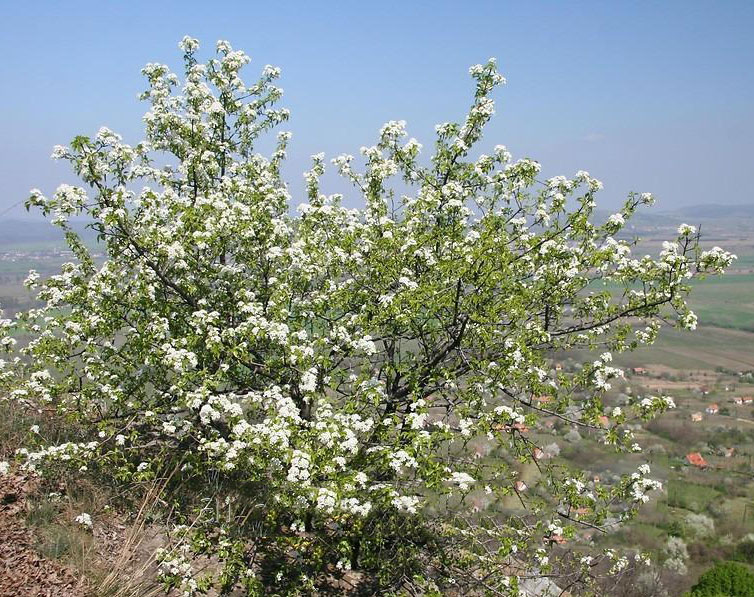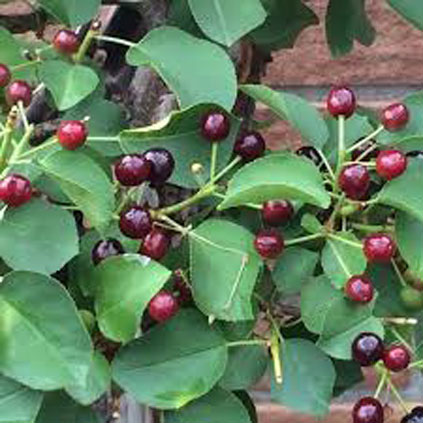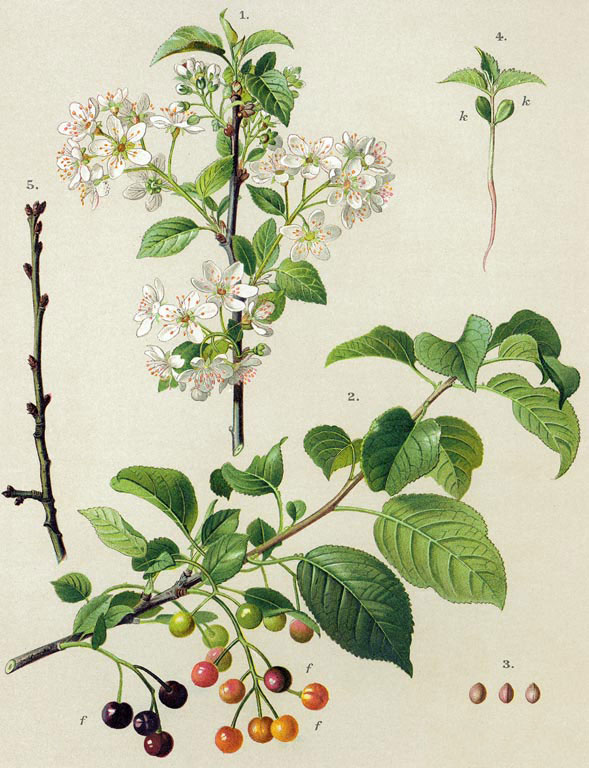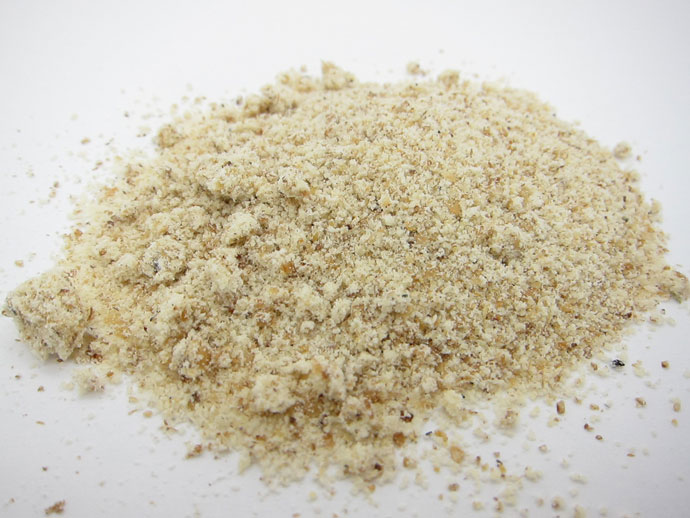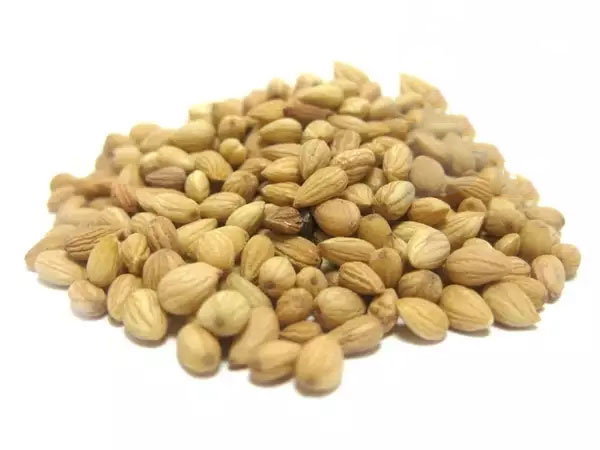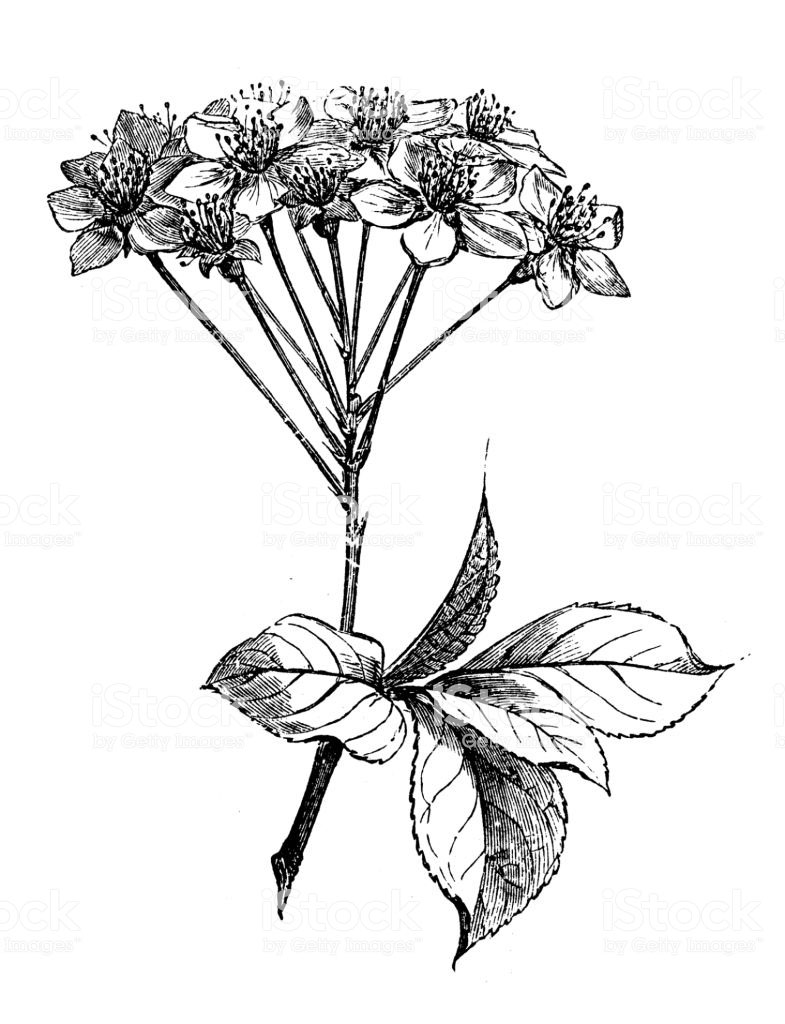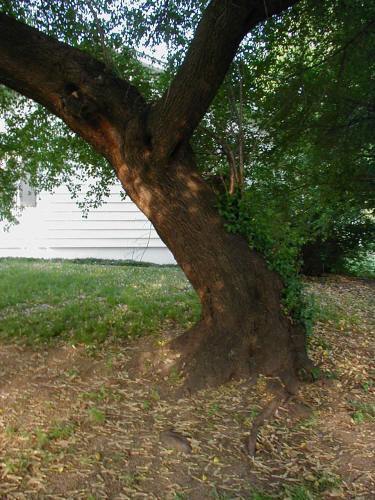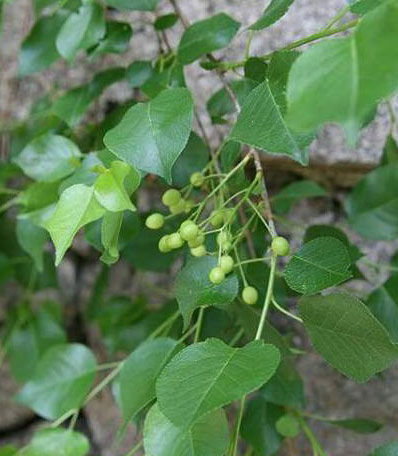| Mahaleb cherry Quick Facts |
| Name: |
Mahaleb cherry |
| Scientific Name: |
Prunus mahaleb |
| Origin |
Central and Southern Europe, extending to Spain, and through Gibraltar to the tip of Northwest Africa |
| Colors |
Green when young turning to red, dark purple and finally black |
| Shapes |
Small thin-fleshed cherry-like drupe 8–10 mm in diameter, dark red, more or less bitter but pleasantly tasty. |
| Taste |
Sweet, Bitter |
| Health benefits |
Beneficial for Type 2 diabetes, Heart disease, kidney and abdominal pain, cancer, shortness of breath and malaria. |
Mahaleb cherry scientifically known as Prunus mahaleb L. is a deciduous shrub or small tree in the Rosaceae (Rose family). The plant is native to Central and Southern Europe, extending to Spain, and through Gibraltar to the tip of Northwest Africa, from the Balkans eastwards to Ukraine, Western and Central Asia. Some of the popular common names of the plant are Mahaleb cherry, Perfumed cherry, St. Lucie cherry, Cerezo de Santa Luca, Gandhi cherry, rock cherry, Saint lucie cherry, St Lucie’s cherry and English Cherry. Mahaleb cherry (Mahlep Tree) has been used for centuries for its fruits and its almond-tasting seeds inside the stone, especially in East Europe and the Middle East. More recently this plant has been used in horticulture as a frost-resistant rootstock for cherry plants.
Plant Description
Mahaleb cherry is a deciduous shrub or small tree that grows about 2–10 m (rarely up to 12 m) tall with a trunk up to 40 cm diameter. The plant is found growing in dry hillsides, thickets and open woods, at the margins of temperate oak forests, in bluffs, riverbanks, roadsides, stream banks, limestone bluffs and quarries, fence rows and chaparral. The plant thrives in a well-drained moisture-retentive loamy soil, growing best in a poor soil. It prefers some lime in the soil but is likely to become chlorotic if too much lime is present. The plant is deep-rooted, with a fibrous root system. The young twigs are glandular with yellowish-grey hairs, becoming later brownish and hairless. Bark is grey-brown in color with conspicuous lenticels on young stems, and shallowly fissured on old trunks. Stems lack thorns.
Leaves
Leaves are 1.5–5 cm long, 1–4 cm. wide, alternate, clustered at the end of alternately arranged twigs, ovate to cordate, pointed, have serrate edges, longitudinal venation and are glabrous and green. The petiole is 5–20 mm, and may or may not have two glands.
Flowers
Flowers are 1-1.5 cm wide, fragrant, white, on about 1 cm long pedicels, arranged in upright corymb-like raceme inflorescences of 3-12 flowers, at the tips of short, lateral, leafy shoots. The flower pollination is mainly by bees. Flowers appear in an inflorescence that typically has fewer than 10 flowers in a raceme. Flowering normally takes place from April to May. The flower is usually pollinated by bees.
Fruits
Fertile flowers are small thin-fleshed cherry-like drupe 8-10 mm in diameter, green at first turning red then dark purple to black when mature, with a very bitter flavor; flowering occurs mid spring with the fruit ripening in mid to late summer.
Health benefits of Mahaleb cherry
Listed below are few of the benefits of Mahaleb cherry
1. Type 2 diabetes
Oleic acid in mahlab can reduce blood pressure and increase fat-burning to aid weight loss, which can help to prevent diabetes. Research has shown that oleic acid has the ability to reduce symptoms of type 2 diabetes in mice.
2. Heart disease
Linoleic acid is supposed to be favorable for the treatment of multiple health conditions including heart disease.
Traditional uses and benefits of Mahaleb cherry
- It is useful against shortness of breath and malaria.
- It is pain cutter.
- It gives strength to the body and increases sexual desire.
- It is good for diabetics and those with prostate complaints.
- It is good for kidney and abdominal pain.
- It is also claimed to be of benefit in the treatment of cancer.
- In small amounts this exceedingly poisonous compound stimulates respiration, improves digestion and gives a sense of well-being.
Culinary Uses
- The fruit might be edible, if the fruit is bitter it should not be eaten in any quantity due to the presence of toxic compounds.
- Seed can be consumed raw or cooked.
- Dried seed kernels are used as a flavoring in breads, sweet pastries, confectionery etc.
- Spices prepared from seeds were used for centuries in the Middle East and North Africa to flavor bread, cakes, cheese, cookies, etc.
- Mahleb is used in small quantities to sharpen bakery and food items.
- Egyptians mix honey with mahleb paste and add other items such as sesame seeds and nuts and consume it as a dessert or snack with bread.
- It is added as an important ingredient in bakery products such as breads, biscuits, sweet cakes and pastries.
- This regal spice adds majesty to many sweets and bakery items.
- Mahleb can be treated like nutmeg.
- You can sprinkle it on sautéed vegetables or creamy soups, especially dishes with carrots or pumpkin.
Recipe
Tsoureki – Greek Easter Loaf
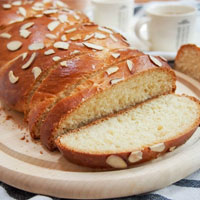
Ingredients
- 1 kg flour
- 1 cup lukewarm milk
- 2 bags instant dry yeast
- 5 cup sugar, cherry mahaleb, grated lemon rind
- 1 cup shortening
- 6 eggs
Directions
- Knead and let dough rises twice.
- Divide into three portions and each portion into another three. Roll out each portion into strip. Braid 3 strips together loosely.
- Cover the tsoureki till they are double in size.
- Beat lightly 1 egg with 1-2 tbsp. sugar and glaze the tsourekia.
- Bake for 20 minutes or till golden brown.
Other Facts
- Green dye can be obtained from the leaves.
- Dark grey to green dye can be obtained from the fruit.
- Can be used as a root stock for the cultivated cherries.
- Wood is hard, very heavy, polishes well.
- Wood is used for turnery, ornamental items etc.
- Wood is hard, heavy, with a pleasant odor, used for carving small objects; e.g. tobacco, pipes, canes, cigarette holders.
- Plant has the potential for use as a gene donor for crop improvement.
- Leaves are used for perfumes.
- Distillation of the leaves and fruit yields a fragrant liquid, used in perfumery.
- Seeds are used in the production of almond soap.
- Young branches are used in the construction of various objects such as cabinets, wine barrels and baskets.
- At one time, the aromatic wood was a favorite for making tobacco pipes.
- Due to its extensive root system the mahaleb cherry can prevent erosion and is suitable for wasteland reclamation and afforestation.
Precautions
- Toxin is found mainly in the leaves and seed and is readily noticed by its bitter taste.
- It is usually present in too small a quantity to do any harm but any very bitter seed or fruit should not be eaten.
- In small quantities, hydrogen cyanide has been shown to stimulate respiration and improve digestion, it is also claimed to be of benefit in the treatment of cancer.
- In excess, however, it can cause respiratory failure and even death.
- Do not eat the seed if it is too bitter.
References:
https://www.itis.gov/servlet/SingleRpt/SingleRpt?search_topic=TSN&search_value=24789#null
https://davesgarden.com/guides/pf/go/85891/
https://npgsweb.ars-grin.gov/gringlobal/taxonomydetail.aspx?id=30034
http://www.floracatalana.net/prunus-mahaleb-l
https://plants.usda.gov/core/profile?symbol=PRMA
http://www.theplantlist.org/tpl1.1/record/rjp-57
https://gd.eppo.int/taxon/PRNMH
Comments
comments


